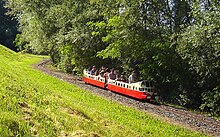
Back Liliputbahn German Ancho de quince pulgadas Spanish 15インチ軌間 Japanese Tolok lima belas inci Malay Rozstaw piętnastocalowy Polish Bitola de quinze polegadas Portuguese අඟල්-පහළොව ආමාන දුම්රිය මාර්ගය Singhalese Spårvidd 381 mm Swedish 十五英寸铁轨 Chinese



| Track gauge | ||||||||||||||||||||||||||||||||||||||||||||||||||||||||||||||||||||||||||||||||||||||||||||||||||||||||||||||||||||||||||||||||||||||||||||||||||||
|---|---|---|---|---|---|---|---|---|---|---|---|---|---|---|---|---|---|---|---|---|---|---|---|---|---|---|---|---|---|---|---|---|---|---|---|---|---|---|---|---|---|---|---|---|---|---|---|---|---|---|---|---|---|---|---|---|---|---|---|---|---|---|---|---|---|---|---|---|---|---|---|---|---|---|---|---|---|---|---|---|---|---|---|---|---|---|---|---|---|---|---|---|---|---|---|---|---|---|---|---|---|---|---|---|---|---|---|---|---|---|---|---|---|---|---|---|---|---|---|---|---|---|---|---|---|---|---|---|---|---|---|---|---|---|---|---|---|---|---|---|---|---|---|---|---|---|---|---|
| By transport mode | ||||||||||||||||||||||||||||||||||||||||||||||||||||||||||||||||||||||||||||||||||||||||||||||||||||||||||||||||||||||||||||||||||||||||||||||||||||
| By size (list) | ||||||||||||||||||||||||||||||||||||||||||||||||||||||||||||||||||||||||||||||||||||||||||||||||||||||||||||||||||||||||||||||||||||||||||||||||||||
|
||||||||||||||||||||||||||||||||||||||||||||||||||||||||||||||||||||||||||||||||||||||||||||||||||||||||||||||||||||||||||||||||||||||||||||||||||||
| Change of gauge | ||||||||||||||||||||||||||||||||||||||||||||||||||||||||||||||||||||||||||||||||||||||||||||||||||||||||||||||||||||||||||||||||||||||||||||||||||||
| By location | ||||||||||||||||||||||||||||||||||||||||||||||||||||||||||||||||||||||||||||||||||||||||||||||||||||||||||||||||||||||||||||||||||||||||||||||||||||
 |
||||||||||||||||||||||||||||||||||||||||||||||||||||||||||||||||||||||||||||||||||||||||||||||||||||||||||||||||||||||||||||||||||||||||||||||||||||
Fifteen-inch gauge railways were pioneered by Sir Arthur Percival Heywood who was interested in what he termed a minimum gauge railway for use as estate railways or to be easy to lay on, for instance, a battlefield.[1] In 1874, he described the principle behind it as used for his Duffield Bank Railway, distinguishing it from a "narrow-gauge" railway. Having previously built a small railway of 9 in (229 mm) gauge, he settled on 15 in (381 mm) gauge as the minimum that he felt was practical.
- ^ Heywood, A.P. (1974) [1881, Derby: Bemrose]. Minimum Gauge Railways. Turntable Enterprises. ISBN 0-902844-26-1.
